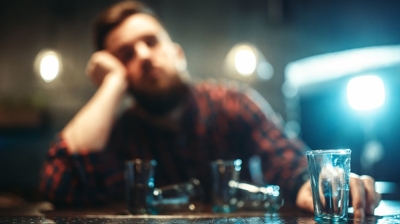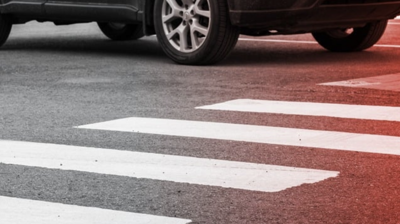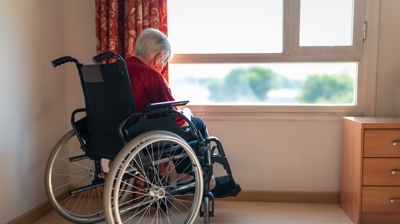It’s very common to have a lot of questions after a car accident. After all, it’s not like they happen to us every day.
In fact, the average motorist only needs to file a car accident insurance claim about once every 17.9 years, according to data from Fox Business. This means that when a car accident happens, it can be difficult to know what to do. How do you file an insurance claim? How do you protect yourself when dealing with your insurance company and the other driver? What should you say, and what shouldn’t you say?
And very commonly: How does my insurance decide who was at fault for the crash?
Insurance adjusters use a detailed process to determine fault in car accidents, considering factors like physical evidence at the accident scene, police reports and interviews with witnesses to construct an image of liability.
We’ll share some details below about how insurance adjusters approach car crash claims, and as always, if you or someone you know was involved in a car accident and you need help with navigating insurance, fault determinations or compensation, the experienced St. Louis personal injury attorneys at Niemeyer, Grebel and Kruse are here for you. Call us 24/7 to schedule a free case evaluation – (314) 350-1900.
The Role of Insurance Adjusters in Fault Determination
When a car accident occurs, insurance adjusters are responsible for evaluating the available evidence to determine fault. Their decision-making process involves a thorough review of state laws, accident details and the accounts of those involved.
The fault determination directly affects compensation from the incident. Three of the most common sources of evidence that insurance adjusters use are: Accident scene evidence, police reports and witness statements.
Investigating the Accident Scene
It all starts with the accident scene. Insurance adjusters perform a meticulous examination of the accident scene to gather evidence, which includes:
- Skid marks
- Damage to vehicles
- Any available photographs and videos
- Fragments and debris that could indicate the dynamics of the collision
This forensic approach allows the insurance adjuster to get an idea of the details of the crash: How fast both cars were going, the directions they were traveling and where the cars struck one another.
Reviewing the Police Report
Beyond the physical evidence, the official police report is a critical document for insurance adjusters. It provides an unbiased account, which can support or refute the statements of those involved in the crash. The report contains details such as traffic conditions and the point of impact, which are essential for adjusters when determining fault.
Police reports often include diagrams and witness statements, which can provide more information about the sequence of events.
Interviewing Witnesses
Witnesses provide objective accounts that are crucial for insurance adjusters in piecing together the events of the accident. These statements help to corroborate or refute the claims made by the drivers involved. Adjusters consider each witness’s perspective to construct an accurate representation of the incident and determine responsibility.
Key Factors Considered by Insurance Adjusters
For each accident, the adjuster must piece together the evidence to construct an accurate account of what happened, which will form the basis for determining liability.
From there, the adjuster will attempt to answer the question: What caused the accident? Was it caused by a driver failing to follow traffic laws, was it environmental or did one driver breach their “duty of care” to other drivers on the road.
Traffic Laws and Regulations
Insurance adjusters begin their assessment by examining whether any traffic laws were disregarded in the moments leading up to the accident. Their investigation focuses on identifying specific violations such as ignoring stop signs, making unsafe lane changes or failing to obey traffic signals.
These types of infractions are key indicators that help establish which driver may be at fault.
Additionally, serious offenses like driving under the influence of alcohol or drugs, or engaging in excessive speeding, are given particular attention due to their clear implications regarding fault. In cases where such egregious violations are evident, the adjuster is likely to attribute a significant portion, if not all, of the fault to the driver who broke the law.
Road and Weather Conditions
Adjusters assess the road conditions at the time of the accident, considering whether factors such as rain, fog, ice, or other environmental conditions may have contributed to the incident. They evaluate whether the drivers involved adjusted their speed appropriately for the conditions and how these factors might influence the determination of fault.
Insurance adjusters take these elements into account as they analyze the external factors that could have influenced the events leading to the accident.
Driver Behavior and Actions
The last piece of the puzzle is the behavior of the drivers is often a crucial element. Even if a driver was technically following the letter of the law, they can be found at fault if their actions showed they didn’t take reasonable care to protect other drivers on the road.
Adjusters conduct a detailed analysis of the drivers’ actions, such as following too closely or engaging in distracted driving, which are indicators of negligence. Subtle actions, like not using a turn signal or maintaining an insufficient following distance, can influence the adjuster’s determination of fault.
“Duty of care” refers to the legal obligation of a driver to adhere to a standard of reasonable care while operating a vehicle, to avoid actions or omissions that could foreseeably harm others. It is a fundamental concept in establishing negligence, as a breach of this duty is required to attribute fault in an accident. In some cases, admissions made by drivers after the accident, such as acknowledging they were distracted, can be decisive in an adjuster’s attribution of fault.
Comparative Negligence and Shared Fault
Missouri follows the doctrine of comparative negligence. This allows for the allocation of fault to be divided among the parties involved based on their respective contributions to the accident.
Each party’s liability for damages correlates with their assigned percentage of fault.
Missouri follows a “pure” comparative negligence rule, which means that a damaged party can recover compensation even if they are found to be up to 99% at fault, although the recovery will be reduced by the party’s degree of fault.
Challenging the Insurance Adjuster’s Decision
If the adjuster determines that you are at fault, and you disagree with this decision, there are several steps you can take to dispute it. You can begin by using the insurance company’s internal appeal process to formally challenge the determination.
If this doesn’t resolve the issue, litigation may be the next best option. This step involves legal proceedings and typically requires the assistance of a car accident lawyer who understands the evidence necessary to contest the adjuster’s conclusion.
The Missouri personal injury attorneys at Niemeyer, Grebel and Kruse specialize in car accident cases, earning accolades from prestigious lists like Best Lawyers and Super Lawyers. Call us today at (314) 350-1900 to discuss your case.
Tips for Protecting Yourself After a Car Accident
As we mentioned above, insurance companies determine fault partially by evaluating your statements and actions in the moments leading up to and after a car accident. To protect yourself, it’s best to:
- Stay at the scene if you’re medically able. Make sure that all involved are safe and that emergency services are alerted — this is an important step in documenting the incident.
- Exchange information with the other parties involved. Don’t apologize or admit fault when you speak with the other driver. It can feel like a nice thing to say to be polite and ease the tension, but this can negatively impact your claim.
- Take photos of the accident scene, including any damage to vehicles and any visible injuries.
- Gather contact information from any witnesses who may have seen the accident.
- Notify your insurance company as soon as possible to report the accident and initiate the insurance claim process.
By following these steps, you can protect yourself and ensure a smoother insurance claim process.
Of course, prioritize your health above all. Even if you feel fine at the moment, it’s very possible that you might have been hurt and any injuries are masked by adrenaline. Seeing a doctor also creates a record of direct cause-and-effect of any injuries and the accident, allowing you to more easily get compensation for your medical expenses.
Get Legal Help 24/7
If you find yourself overwhelmed after a car accident, know that you don’t have to face it alone. The team at Niemeyer, Grebel and Kruse is available around the clock to provide you with the legal assistance you need.
We specialize in navigating the complex insurance claims process and will advocate for your rights every step of the way. Contact us at any time for a free case evaluation and let our expertise guide you to a favorable resolution – (314) 350-1900.






